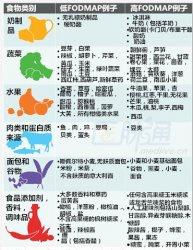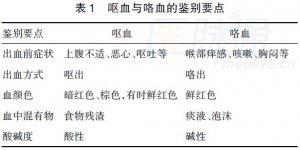紫杉醇与伊立替康治疗晚期胃癌疗效相似
日本千叶癌症中心的Shuichi Hironaka 博士及其同事进行的一项III期临床试验比较了紫杉醇和伊立替康对氟嘧啶联用铂类药物治疗后的难治性胃癌患者的疗效。研究结果在线发表于2013年11月1日的《JCO》杂志上。
研究设计
研究者进行了一项前瞻性,非盲,平行对照组试验,219名日本患者随机分为每周接受一次紫杉醇治疗组(n=108)和每周接受两次伊立替康治疗组(n=111),主要终点为总生存(OS),次要终点为无进展生存期(PFS),应答率,不良反应和接受三线药物化疗的患者比例。
参与试验患者必须符合下列标准:
· 组织学上确诊为转移性或复发性胃癌
· 东方肿瘤协作组状态评分0——2
· 使用氟嘧啶联用铂类药物作为一线药物治疗结束后一个月内,通过CT或其它成像技术对疾病进展情况进行确认
· 此前没有使用过紫杉醇或伊立替康
· 没有严重的腹膜转移
研究结果
患者在每四周的第1、8和15天时接受80 mg/m2的紫杉醇治疗,给药前30分钟使用组胺受体-1和受体-2阻断剂来防止出现过敏。伊立替康组在每四周的第1和15天时用药150 mg/m2.治疗一直持续到病情有所进展,出现不可接受的严重毒性或患者拒绝治疗。紫杉醇组平均给药次数11.5次,伊立替康组为4.5次。由于病情有进展而停药的占86.7%,不良反应引起的占7.3%,撤回同意的占3.2%,其它原因占2.8%.
治疗组之间的OS和PFS没有显著性差异。紫杉醇组和伊立替康组中位总生存期没有显著性差异(9.5月vs. 8.4月,风险比1.13,95% CI 0.86-1.49,P=0.38)。紫杉醇组PFS平均值为3.6月,伊立替康组为2.3月(HR 1.14, 95% CI0.88-1.49)。紫杉醇组应答率为20.9%,伊立替康组为13.6%.紫杉醇组有89.8%的患者接受三线药物化疗,伊立替康组有72.1%,存在显著性差异(P=0.001)。紫杉醇组有四分之三的患者使用伊立替康作为三线化疗药。在伊立替康组,超过一半患者使用含有紫杉烷的治疗方案作为三线治疗。
3级和4级不良反应包括中性粒细胞减少症(紫杉醇组28.7%,伊立替康组39.1%),贫血症(21.3% vs.30%),和厌食症(7.4% vs.17.3%)。伊立替康组2名患者的死亡原因为严重的肺炎和胃穿孔。
结论
每周使用一次紫杉醇与每周使用两次伊立替康作为二线药物治疗晚期胃癌的疗效相似。这项试验的局限在于样本量少。
原文摘要
Abstract
Purpose This phase III study compared treatment with weekly paclitaxel and biweekly irinotecan in patients with advanced gastric cancer refractory to treatment with fluoropyrimidine plus platinum.
Patients and Methods Patients were randomly assigned to receive either paclitaxel (80 mg/m2 on days 1, 8, and 15, every 4 weeks) or irinotecan (150 mg/m2 on days 1 and 15, every 4 weeks)。 Primary end point was overall survival (OS), and secondary end points were progression-free survival (PFS), response rate, adverse events, and proportion of patients who received third-line chemotherapy.
Results Of 223 patients, 219 were eligible for analysis. Median OS was 9.5 months in 108 patients allocated to the paclitaxel group and 8.4 months in 111 patients allocated to the irinotecan group (hazard ratio [HR], 1.13; 95% CI, 0.86 to 1.49; P = .38)。 Median PFS was 3.6 months in the paclitaxel group and 2.3 months in the irinotecan group (HR, 1.14; 95% CI, 0.88 to 1.49; P = .33)。 Response rate was 20.9% in the paclitaxel group and 13.6% in the irinotecan group (P = .24)。 Common grade 3 to 4 adverse events were neutropenia (paclitaxel group, 28.7%; irinotecan group, 39.1%), anemia (21.3%; 30.0%), and anorexia (7.4%; 17.3%)。 Treatment-related deaths occurred in two patients (1.8%) in the irinotecan group. Third-line chemotherapy was administered in 97 patients (89.8%) after paclitaxel treatment and in 80 patients (72.1%) after irinotecan treatment (P = .001)。
Conclusion No statistically significant difference was observed between paclitaxel and irinotecan for OS. Both are reasonable second-line treatment options for advanced gastric cancer.
本站所注明来源为"爱爱医"的文章,版权归作者与本站共同所有,非经授权不得转载。
本站所有转载文章系出于传递更多信息之目的,且明确注明来源和作者,不希望被转载的媒体或个人可与我们
联系zlzs@120.net,我们将立即进行删除处理


